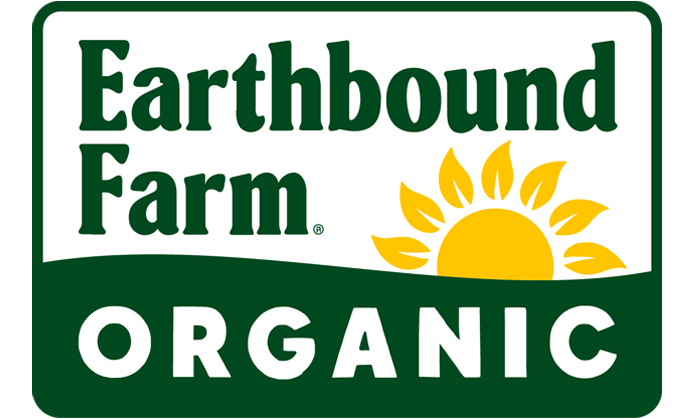Cover Crops: the Swiss Army Knife of Regenerative Farming
Nerdy farming stuff ahead…proceed at your own risk.
We often say that organic farming is farming “in harmony with nature.” That’s true. And it’s also true that farming in a truly regenerative organic way demands so much more than simply avoiding the use of harsh chemicals and synthetic fertilizers. It demands our proactive understanding of, nurturing of, and engagement with complex natural cycles. Mother Nature has a doctorate in all this stuff and we’re her eager students.
 We’ve learned a lot over the nearly 40 years we’ve been farming organically, but there’s so much more to learn. We recently hosted a delegation of about 40 farmers who are interested in learning how to use more biological/natural controls on their farms and reduce their use of the other stuff. They were there so we could walk them through the field trials of some regenerative practices we’ve got going on, including cover crops. We’re always happy to share what we’ve learned and what we hope to learn.
We’ve learned a lot over the nearly 40 years we’ve been farming organically, but there’s so much more to learn. We recently hosted a delegation of about 40 farmers who are interested in learning how to use more biological/natural controls on their farms and reduce their use of the other stuff. They were there so we could walk them through the field trials of some regenerative practices we’ve got going on, including cover crops. We’re always happy to share what we’ve learned and what we hope to learn.
But First…Let’s Get Under the Covers
 Cover crops, that is. They’re called cover crops because they cover the land when the food crop is not being grown. They benefit soil health and the total ecosystem in various ways while they are growing and continue to add benefits when they die and are worked back into the soil.
Cover crops, that is. They’re called cover crops because they cover the land when the food crop is not being grown. They benefit soil health and the total ecosystem in various ways while they are growing and continue to add benefits when they die and are worked back into the soil.
Cover crops are kind of like the Swiss Army Knife of regenerative practices: they do a lot:
- Adding nutrients to the soil
- Improve soil’s physical and biological properties
- Increase biodiversity
- Suppress weeds
- Improve the soil’s capacity to retain water – which reduces irrigation requirements
- Break pest cycles
- And more…
Watch this cool video for a quick intro to cover crops…and read on below for more of a deep dive on regenerative farming practices.

What the farmers came to check out on our farm was the cover crop research project we’ve got going. Spoiler alert: we don’t have the results yet, but we’ll share them when we do. We’re measuring and tracking the impact of a few different regenerative benefits of cover cropping. With our research trials we are looking to dial in those healthy soil components to work efficiently and effectively for our leafy greens, head lettuces and vegetables. A big part of that is understanding what specific cover crops can accomplish in the specific time and specific place it’s needed. This research will allow us to develop ranch-specific soil nutrition history so we can track and analyze changes in key nutrition and soil health measurements.
Our trials include:
- Measuring how the cover crop affects the nitrogen content of the soil. Why? Nitrogen is an essential nutrient for plants. Cover crops often are tasked with nitrogen scavenging: recycling or adding nitrogen to the soil. Legume (peas and beans) cover crops are most often associated with nitrogen scavenging because they can grab the nitrogen in the air and feed it to the beneficial bacteria in the soil, which then convert the nitrogen to ammonia, which nourishes the plants. Other cover crops, such as grasses and brassicas, also scavenge nitrogen from the soil and prevent it from leaching away into groundwater or running off in surfaces waters to our creeks, streams and rivers. When cover crops die and are worked back into the soil, they release nitrogen back into the soil where it can feed the next crop.
- Understanding precisely when the nutrients from cover crops become available to the crops we harvest. We’re keeping track of how these cover crops deliver their benefits in different types of soils and growing conditions. We’re also looking at what mix of cover crop plants are best suited for our varied growing locations. For example, we have had a very dry winter in our California growing region. Drought impacts cover crop growth and economics.
- Measuring increase in soil organic matter and all the benefits that go with it. Soil organic matter is the stuff of life itself. The more healthy organic matter in the soil, the better it retains nutrients and water, the better the soil structure is, and the healthier the soil’s ecosystem of beneficial microorganisms is. We’re track the level of soil organic matter as well as carbon, nutrients, water retention, microbial biodiversity and soil structure.
- Evaluating cover crops plus reduced tillage. In regenerative farming, we minimize the tilling of the soil. Why? To protect the soil integrity, we want to disturb it as little as necessary while still giving it what it need. With reduced tillage, we’re looking to make nutrients available to the plants while avoiding soil compaction, reducing fuel consumption, and lowering labor hours, all of which factor into how we’re measuring the sustainability of our farms.
Mother Nature spins a remarkably sophisticated, delicately balanced web of life. The details of soil ecosystems and agronomic practices constantly offer new lessons. We’re working through it all now and whatever we learn from these complex trials, the results will be incredibly valuable to us, to the soil of our organic ranches, and to the ecosystems our farms inhabit.
